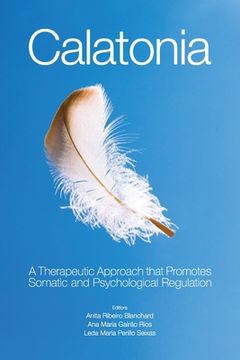Calatonia: A Therapeutic Approach that Promotes Somatic and Psychological Regulation (en Inglés)
Reseña del libro "Calatonia: A Therapeutic Approach that Promotes Somatic and Psychological Regulation (en Inglés)"
Calatonia is a body-based, psychophysical approach created during WWII by Pethö Sándor, a Hungarian physician. He developed Calatonia whilst working as a doctor for the Red Cross, in various refugee camps. Calatonia arose out of necessity, and was probably the first somatic therapy developed from, and initially for, those suffering from war trauma.A pioneering spirit, he recognised the importance of fostering the organism's self-regulation within the therapeutic context, in order to achieve psychological balance and to facilitate the integration of traumatic experiences. His work is life affirming and encourages resilience building, structured around the global reorganisation and mutual regulation of soma and psyche - dictated neither by symptoms nor by the grip of trauma.Sándor settled in Brazil after the Second World War, where his gentle method has been used in psychotherapy, education, child development, health, personal growth, and stress prevention. There are many books, theses and dissertations written in Portuguese, and now, an ever-growing enthusiasm for it has been endorsed by recent studies in neuropsychology, cognitive neuroscience and neuroscience of touch, which have offered abundant evidence for future validation of the method. Calatonia uses Default Mode Network connectivity, integrates Mind Wandering, and explores the positive potential of the Orienting Reflex to reorganise mind-body. Chapters: First chapter, "Calatonia", was published in 1969 in the Boletim de Psicologia, in São Paulo, by Pethő Sándor, and is here reprinted (translated). Paulo Machado Filho's chapter gives a context for Sándor's method. Rosa Farah (1949-2016) briefly describes the teaching of the method within the professional course of psychology in São Paulo.Sandra Tavares presents her work with Subtle Touch and Calatonia within the Brazilian public healthcare system, both in individual and group therapy. Claudia Herbert addresses the healing of trauma and offers an exploration of the scientific rationale and specific considerations for the application of Calatonia and Subtle Touch in trauma treatment. Maria Irene Gonçalves finds a parallel between alchemical symbolism and psychodynamic processes in somatic psychotherapy with children.Céline Lorthiois explains Deep Pedagogy, a pedagogic method that integrates Calatonia and Subtle Touch approach to child development.Irene Gaeta presents an adult patient, who suffered early trauma, and how through the use of Calatonia followed by art-therapy, she was enabled to access, reorganise and integrate her preverbal memories. Leda Seixas expands on the use of Sándor's body-based techniques in the treatment of patients with schizophrenia and discuss central tenets of Jung's psychology in Sándor's method. Anita Blanchard writes about the Jungian concept of psyche in psychotherapy and in the ethos of Sándor's work. Vivian Nassif and Maria Georgina Gonçalves describe the Calatonia of Sight, formulated for the treatment of individuals suffering from visual impairment, and now used as a tool in psychotherapy. Ana Maria Rios describes the case of a child with attachment issues stemming from trauma, abandonment and loss, who was successfully treated with Calatonia. Lúcia Helena Almeida presents the case of an uncommunicative teenager who was able to express herself through a series of drawings, created after receiving Calatonia and other somatic work in session. Marilena Armando examines some essential attributes of resilience, and the ways in which Calatonia contributes to the development of resilience and numinous experiences. Beatriz Henry and Luiz Lemos discuss how the use of Calatonia produces a distinctive field of transference in psychotherapy and enhances the probability of synchronous phenomena. Anita Blanchard presents a summary of the hypotheses about the neuroscientific underpinnings of Pethö Sándor's method.

